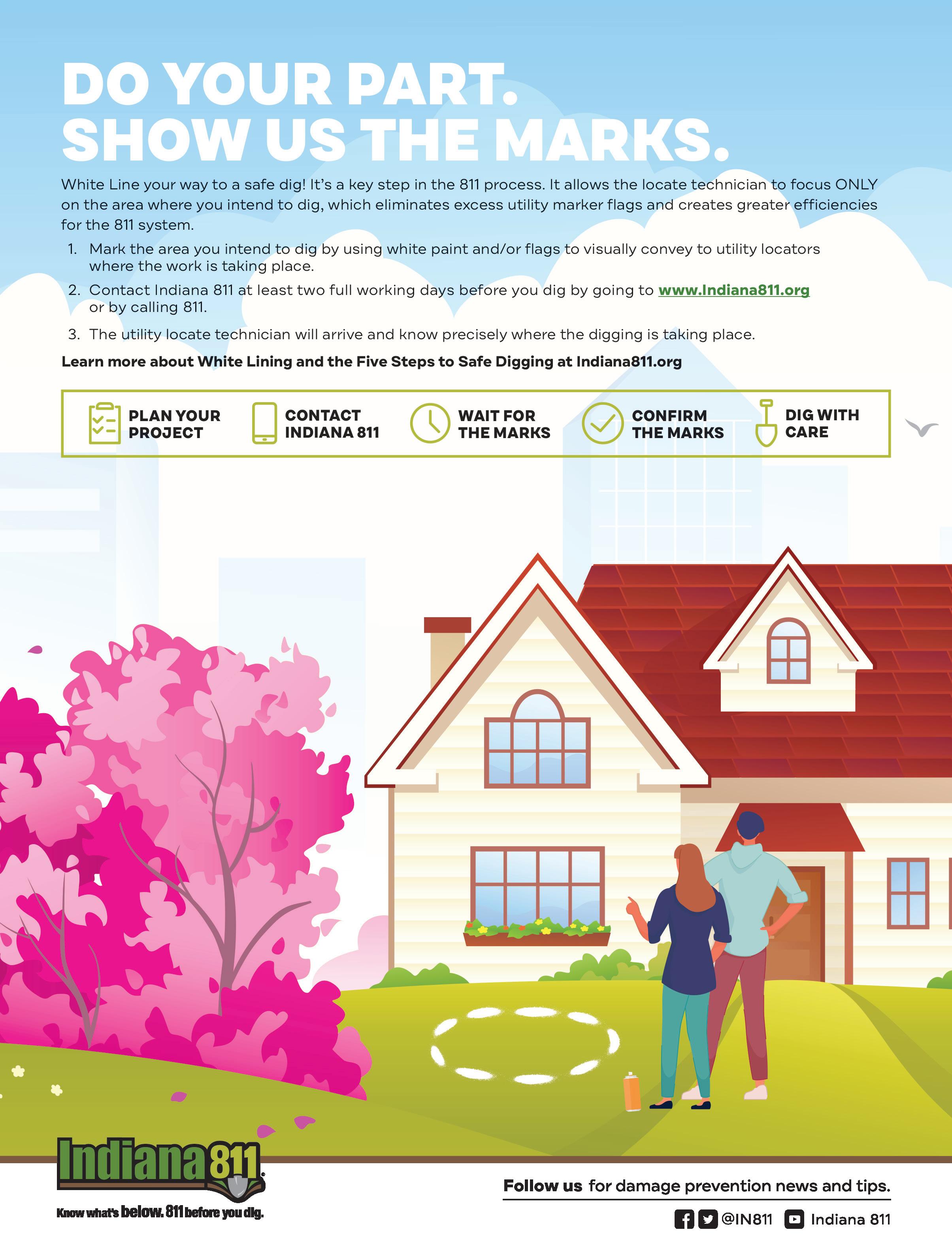Steuben county remc

Annual meeting official notice
Voting instructions, candidate biographies, CEO report, financial information inside




Voting instructions, candidate biographies, CEO report, financial information inside


Senior Editor Richard Biever is a rare talent and the lifeblood of Indiana Connection magazine. Here’s more about him, in his own wonderful words.

My role at Indiana Connection is to tell the stories of Indiana’s electric cooperatives and their consumers. As senior editor, I generally write and photograph most of the cover stories. Writing about the people of rural and suburban Indiana, state history and places, and how electric co-ops connect has been an incredibly satisfying career for over 34 years.
Three facts about Richard:
• Some of my favorite things, coincidentally, have their beginnings the year I was born. My two favorite musical artists, Bob Dylan and the Beatles, started recording in 1962; the first season of my favorite baseball team, the New York Mets, was also in 1962.
• Tell City, on the Ohio River, was my dad’s hometown and where I grew up. Perry County is where Abraham Lincoln’s family crossed the Ohio River from Kentucky and settled when Lincoln was a tot. Of course, the land where Lincoln spent a quarter of his life and grew to adulthood became part of Spencer County when it was formed in 1818. That’s still a source of personal pride because Spencer County is where my mother grew up.
• I am passionate about iconic electric cooperative mascot Willie Wiredhand. Willie is the friendly face who’s represented consumer-owned co-op power since 1951. I have done my utmost to keep Willie alive and vibrant as our spokesplug promoting electrical safety and efficiency, and representing co-ops in a light way.
If there’s been a story in the last 34 years you’ve loved, Richard likely wrote it.
Stephanie Groves Editorsgroves@indianaec.org
Win a prize pack of Richard’s favorite things, including a Willie Wiredhand bendy and a Bob Dylan CD!
On the menu: August: Recipes for one pot dinners ready in 30 minutes, deadline June 1. September: Crunchy recipes, deadline July 1. If we publish your recipe on our food pages, we’ll send you a $10 gift card.
Giveaway: Win a prize pack of Richard Biever’s favorite things! Visit indianaconnection.org/talk-to-us/contests or send your contact information to the address below. The deadline to enter is May 31.
Three ways to contact us: To send us recipes, photos, event listings, letters and entries for gift drawings, please use the forms on our website indianaconnection.org; email info@indianaconnection.org; or send to Indiana Connection, 8888 Keystone Crossing, Suite 1600, Indianapolis, IN 46240-4606.
VOLUME 72 • NUMBER 11
ISSN 0745-4651 • USPS 262-340
Published monthly by Indiana Electric Cooperatives
Indiana Connection is for and about members of Indiana’s locally-owned, not-for-profit electric cooperatives. It helps consumers use electricity safely and efficiently; understand energy issues; connect with their co-op; and celebrate life in Indiana. Over 311,000 residents and businesses receive the magazine as part of their electric co-op membership. Member’s cost per issue is approximately 32 cents, plus postage.
CONTACT US:
8888 Keystone Crossing, Suite 1600 Indianapolis, IN 46240-4606 317-487-2220
info@indianaconnection.org
IndianaConnection.org
INDIANA ELECTRIC COOPERATIVES OFFICERS:
Randy Kleaving President
Steve McMichael Vice President
Dr. Richard Leeper Secretary/Treasurer
John Cassady CEO
EDITORIAL STAFF:
Stephanie Groves Editor
Richard George Biever Senior Editor
Holly Huffman Communication Support Specialist
Lauren Carman Communication Manager
Kiley Lipps Graphic Designer
Ashley Curry Production and Design Coordinator
Amber Knight Creative Manager
Mandy Barth Vice President of Communication
ADVERTISING:
American MainStreet Publications
Cheryl Solomon, local ad representative; 512-441-5200; amp.coop
Crosshair Media 502-216-8537; crosshairmedia.net
Paid advertisements are not endorsements by any electric cooperative or this publication.
UNSOLICITED MATERIAL:
Indiana Connection does not use unsolicited freelance manuscripts or photographs and assumes no responsibility for the safekeeping or return of unsolicited material.
SUBSCRIPTIONS:
$12 for individuals not subscribing through participating REMCs/RECs.
CHANGE OF ADDRESS:
If you receive Indiana Connection through your electric co-op membership, report address changes to your local co-op.
POSTAGE:
Periodicals postage paid at Indianapolis, Indiana, and at additional mailing offices.
POSTMASTER:
Send change of address to: Indiana Connection, 8888 Keystone Crossing, Suite 1600, Indianapolis, IN 46240-4606. Include key number.
No portion of Indiana Connection may be reproduced without permission of the editor.




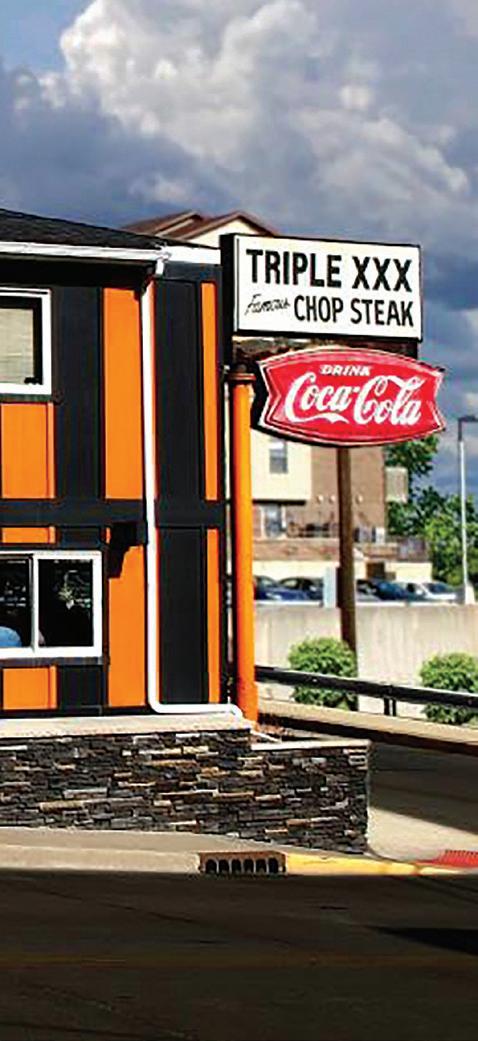


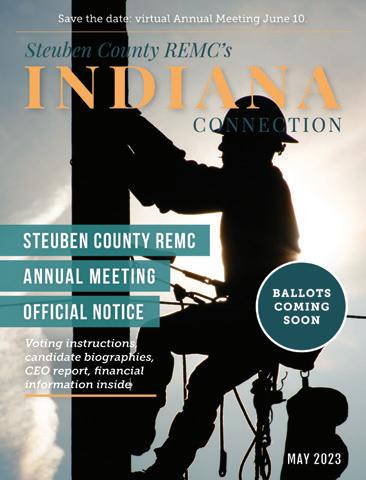


SATURDAY, JUNE 10
Watch the weekly videos and voting results on June 10 on Facebook, YouTube and our website remcsteuben.com.
KEVIN KEISER, CEO
DUSTIN EVERETTS, Operation/Engineering
JOSHUA DURBIN, Member Services
STEVE SMITH, Finance
DAVE SHORT, Broadband Operations
How to Understand Your Electric Bill

Facilities charge................................$19/month
First 250 kWh........................9.9 cents per kWh
Next 750 kWh.......................9.1 cents per kWh
All over 1,000 kWh...............8.3 cents per kWh
Wholesale power tracker...+$.020285 per kWh
Dusk to Dawn Light.....................$10.30/month
Indiana Sales Tax..........................................7%
GARY SHOUGH, Secretary/Treasurer (District 1, Millgrove and Greenfield townships)
SCOTT CHARTERS (District 2, Jamestown Township)
BILL SNYDER (District 3, Fremont and Clear Lake townships)
MIKE KURTZ (District 4, Jackson Township)
CARTER SNIDER (District 5, Pleasant Township)
NEASA KALME (District 6, Scott and York townships)
WAYNE GINGERICH, President (District 7, Salem Township)
LARRY JACK, Vice President (District 8, Steuben, Smithfield and Grant townships)
MARC NELSON (District 9, Otsego, Richland and Franklin townships)
TIMELINE
MAY 8
Voting will be available online, on SmartHub and through mail-in ballot. 50 random winners will be drawn weekly for those that cast a vote. Learn how to vote on page 7.
JUNE 8
Voting closes. All ballots must be received.
JUNE 10
Voting results released.
2023 Annual Meeting
JUNE 10
Disconnection Charges: Electric DISCONNECT DATES ARE 2.5 WEEKS AFTER DUE DATE
Reconnection Charge: $50 (7:30 a.m.–4 p.m.)
Reconnection Charge: $200 (after 4 p.m.)
Deposit: $200
Returned check fee: $25
Disconnection Charges: Broadband DISCONNECT DATES ARE THE 9TH OF EVERY MONTH
Reconnection Charge: $60
Returned check fee: $25
In many respects, 2023 can be summarized as perhaps the most challenging and rewarding year in your cooperative’s history, or at least in recent memory. This summarization is based on the large number of challenges and setbacks we faced throughout the year. In the end, your cooperative was able to respond and continue to improve our members’ quality of life.
The first area I would like to address relates to the weather. Beginning in June of last year and continuing through the winter of 2023 and now spring, our area has been in the crosshairs of a number of violent storms. Some of these devastating storms brought high winds, rain and lighting, while others brought ice and heavy, wet snow. In the wake of these storms, our members and region were left with countless numbers of damaged trees, homes and infrastructure. Our operation crews worked tirelessly to restore power and replace broken poles and facilities. In addition to working nights and weekends, your cooperative requested and received help from many of our neighboring cooperatives on two occasions. On behalf of the
Board, I would like to thank all of them and our employees for their hard work. They truly are the difference makers in our ability to restore your power in a timely manner.
Unfortunately, these service interruptions, system damage and additional labor come at a cost and in 2022 played a big role in operating margins being down nearly $80,000 from 2021 levels. We are estimating that the February 2023 storms will come in at an additional cost of $225,000 and will be reflected in next year’s financials.
As we have also seen, our economy continues to struggle with inflation, rising interest rates, price increases and shortages of materials. In fact, we have seen virtually everything from interest rates to poles, wire and hardware increase in the last year. Even the energy markets and our wholesale power prices have been affected by the downturn in the economy. Based on our current administration’s efforts to address the problems and their position on fracking and natural gas constraints, we really don’t see any relief in the near future. In and of itself, these changes would be a challenge, but when you consider our efforts to build a broadband internet network in the
region, these cost increases certainly became much more troublesome.

Internally, your cooperative had to work through a rather large and complicated data processing conversion to allow for the expansion of services to include broadband internet. Setting up a completely new billing process for broadband was tedious, but when you consider the efforts to complete the engineering, design, mapping and marketing, there was a tremendous amount of behindthe-scenes work done before we could even get to start construction.
However, in spite of all of these challenges, in October 2022, we began connecting our Fiber to the Home (FTTH) internet service to members in the west side of our service area. Today, we have nearly 1200 total accounts when we consider our Point to Point (P2P) network. In fact, we have reached a significant milestone by now having all of Phase 1 of our FTTH network completely open and available to our members. We are presently working in Phase 2, which includes the area north of Angola and the lakes region with an anticipated completion date of August 2023. By the end of the year, we hope to have Phase 3 serving the east side of our territory completed, and by
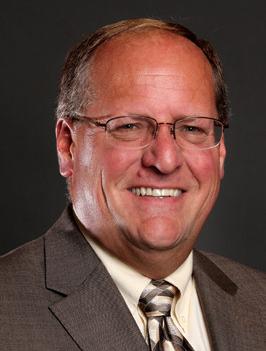
this time next year, we plan to have the network available to all of our members.
Unfortunately, those same economic factors I mentioned earlier are contributing to higher-than-expected costs on the FTTH project as well, and this may create some additional risks for us as we move forward. However, our member’s participation and the level of service they request could play an important role in offsetting these expenses. As an example, in phase 1, nearly 50% of members connected to the broadband internet service and a majority of those signed up for the 500 Mb: gold service level. Initially, we estimated the take rate to be 40% and that the 100 Mb: silver service level would be the most popular. Clearly, this interest level indicated that the demand for broadband in our area is stronger than expected and how needed high-speed internet is here in rural Steuben County.
In spite of all the challenges that I have mentioned, your cooperative was able to finish the year in sound financial condition with over $454,000 in operating margins before we add any patronage related to our
wholesale power provider Wabash Valley Power Alliance. Our equity is down a bit to 45% due to the capital investment in broadband, but still very commensurate to industry standards. Our retail rate is up slightly to cover some of the debt service associated with our capital expenditures as well as changes in our wholesale power costs. However, it still remains very competitive and one of the lowest in the region.
Finally, I would be remiss if I did not take this opportunity to not only thank our employees but also compliment them on all of their hard work and dedication this year. There is no way we could have managed to work through so many challenges and yet achieve so much without these highly skilled individuals. Every day they show up ready to take on whatever needs to be done. It is a privilege to be by their side and because of their efforts, I’m confident that your cooperative will continue to provide the services our members need to help improve your quality of life.
• Mark your selection by completely filling in the box.
• Detach ballot and place in the enclosed return envelope. Mail to Survey & Ballot Systems, 7653 Anagram Drive, Eden Prairie, MN 55344.
• Do NOT include bill payment in the return envelope.
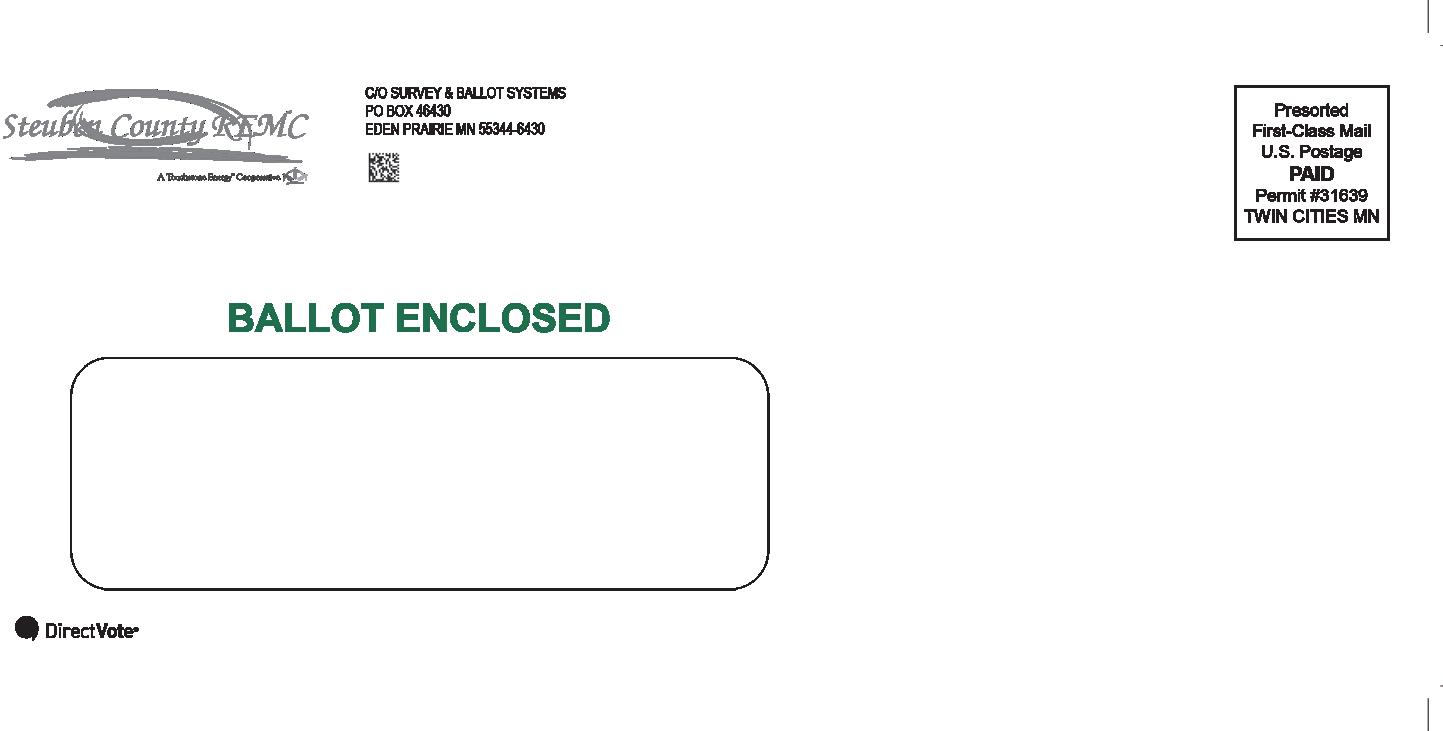
• Ballots must be received by June 8, 2023.
• Please allow sufficient time for delivery.
• To access the login page of the official 2023 SCREMC Election, please type directvote.net/SCREMC into the address bar located at the top of your internet browser screen.
• Above and to the left is your Member Number and your Election Passcode.
• Use both of these numbers to log in.
• Once registered, follow the online voting instructions.
• Online voting begins on May 8, 2023, and ends at 11:59 p.m. ET, June 8, 2023.
• Do not mail your ballot if you plan to vote online.
• App: Open your SmartHub app, log in and click the “Vote Now” button.
• Online: Log in to your SmartHub online account and click the “Vote Now” button.
• Online voting begins on May 8, 2023, and ends at 11:59 p.m. ET, June 8, 2023.
Do not mail your ballot if you plan to vote online. If you have any problems voting online, please email support@ directvote.net or call 952-974-2339.
THREE VOTING OPTIONS THIS YEAR
For maximum accuracy, place thermostats in the center of the home, away from air vents, plumbing pipes and exterior doors. Avoid placing items like lamps and televisions near your thermostat, which can cause the HVAC to run longer than necessary. Avoid installing thermostats in rooms that tend to feel warmer or colder than th e rest of the home. Do not place furniture in front of the thermostat, which can block air flow and result in inaccurate readings.
Source: energy.gov
PHASE 1 (5 ZONES, ALL OPEN) Orland/West Otter/Salem/Helmer
AT-HOME INSTALLATION (ALL ZONES OPEN)
PHASE 2 (ZONES 1 OF 4 OPEN)
Nevada Mills/Lake James/ Crooked Lake
REGISTRATION OPEN MAKE READY CONSTRUCTION (COMPLETE)
MAINLINE CONSTRUCTION (COMPLETE)
Electrical Safety Month: May
Mother’s Day: May 14
Office Closed for Memorial Day: May 29
Operation Round Up Application Deadlines: June 30, Sept. 29, Dec. 29
1. When unplugging a device from an electrical outlet, always hold the __________ while unplugging.
A. Cord B. Plug C. Device
2. Smoke alarms should be tested ______________________.
A. Every month B. Every other month C. Every six months
3. Where is the most dangerous place to use electricity?
A. Near other electrical equipment B. Outdoors C. Near water
MAINLINE SPLICING (ZONE 7 NEVADA NE)
SERVICE WIRE CONSTRUCTION
AT-HOME INSTALLATION (ZONE 6 NEVADA NORTH)
PHASE 3 (6 ZONES)
North-Central-East Angola/ Fremont. Construction starting after Phase 2
REGISTRATION OPEN MAKE READY CONTSTRUCTION
PHASE 4 (4 ZONES)
South-East Angola/Ashley/ Hudson. Construction starting after Phase 3
REGISTRATION OPEN MAKE READY ENGINEERING

It may not have happened yet, but sooner or later, you’re going to see electric vehicle charging stations popping up where there were none before.

When they do, odds are it will be part of the National Electric Vehicle Infrastructure (NEVI) program that was created by the passage of the Bipartisan Infrastructure Law in late 2021.
In a plan that has received approval from the Federal Highway Administration, the Indiana Department of Transportation is investing nearly $100 million to build an electric vehicle charging network at strategic locations across the state of Indiana over the next five years.
The NEVI program means that the Indiana Department of Transportation will contract with partners to build Level 3 DC Fast Charge charging stations along Indiana’s federally designated alternative fuel corridors (AFCs). Those consist of I-64, I-65, I-69,
I-70, I-74, I-80, I-94, I-265, I-275, I-465 and I-469.
This will feed into a national initiative to create a network of at least 500,000 reliable chargers across the United States to help support the growing adoption of electric vehicles.
NEVI funds must be invested in DC Fast Charge charging stations that are compliant with federal guidelines. Some of the primary requirements are that each station must have at least four ports that can charge simultaneously, be located every 50 miles along an AFC — less than one mile from an exit or intersection — and be accessible to the public 24 hours a day.
Indiana’s plan will result in at least 44 charging stations across the state. Once completed, every Hoosier should be within 40 miles of a NEVI-funded charging station. Locations are to be determined with federal guidance and a datadriven approach based on electric vehicle miles traveled, EV adoption
rates and growth models. Existing and planned stations as well as electric grid capacity are among other factors to be considered while promoting convenient usage by passenger EVs, along with mediumand heavy-duty vehicles.
The NEVI program will also fund 80 percent of the installation of EV charging stations along with up to five years of operation and maintenance. The remaining 20 percent of costs are to be funded by site owner-operators from whom the state of Indiana expects to seek proposals by mid-2023, with the installation of charging stations beginning in 2024.
by Chelsi Jackson Energy Advisor Henry County REMC

Fountain County is named for James Fountaine (1757–1790), an officer who served in the American Revolutionary War and the Northwest Indian War. Fontaine was from Virginia and began a military career at an early age. After the Revolutionary War, he moved to Kentucky, where he served as major.
He was killed Oct. 22, 1790, in a battle with the Miami nation, led by Little Turtle, near where the St. Joseph River and St. Marys River merge to form the Maumee River, near modern Fort Wayne.

The Wabash River defines half of Fountain County’s shape, forming the northern and western sides. And while the state song, “On the Banks of the Wabash, Far Away,” was written by Paul Dresser, who grew up downstream in Vigo County, the bridge over the Wabash River at Attica bears Dresser’s name.
George Dewey Hay, the founder of the Grand Ole Opry, is one notable native of Fountain County. He was born in Attica in 1895.
After World War I, Hay worked in radio in Chicago before moving to Nashville, where he started the original Grand Ole Opry radio program, from which the country music stage show of the same name evolved.
Hay died in 1968 and was honored as a Sagamore of the Wabash in 1988.
Named after the road it is situated near, Old 55 Distillery (Old55Distillery.com) is an awardwinning family business in Newtown offering whiskey and bourbon made from locally sourced grains, plus a tasting room and facility tours.

FOUNDED: 1826
NAMED FOR: James Fountaine
POPULATION: 16,351 COUNTY SEAT: Covington
INDIANA COUNTY NUMBER: 23
I just wanted to call and say that I just read the March Indiana Connection, and this is the best one I’ve ever read. The story about Hunter Smith is inspiring and the recipes were wonderful, and I never do anything like this, but I just think you guys needed to know that whoever wrote the article with Hunter Smith in it did an excellent job.
DEBBIE THOMPSON
Via telephone
Mr. Biever,
That was not only a beautiful story, but also beautifully written.
SUZETTE RABER
Via email
Our Marketplace offers maximum exposure for your business or organization at a minimal cost. Please contact Cheryl Solomon, 847-749-4875 or cheryl@amp. coop, for other small business advertising opportunities in Indiana Connection.
We know how to find all water leaks underground. Call us!


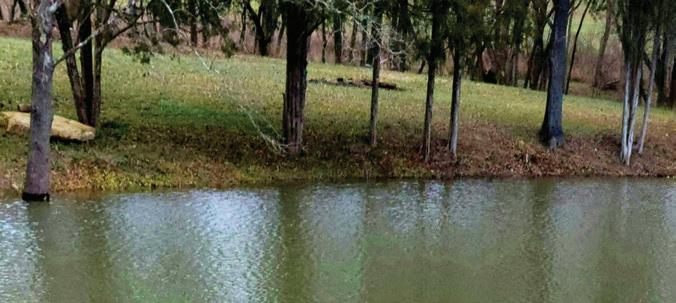
812-987-4119
www.WhatsBelow.com


If you’re looking for a dining experience with a hint of nostalgia, consider cruising to one of Indiana’s drive-in restaurants. Jesse G. Kirby is credited as the originator of the drive-in concept in the United States, and he founded Kirby’s Pig Stand in the early 1920s in Dallas, Texas. Over the next decade, the trend spread throughout the country, and the concept of ordering food and having it delivered to your car became more common as families began owning automobiles.
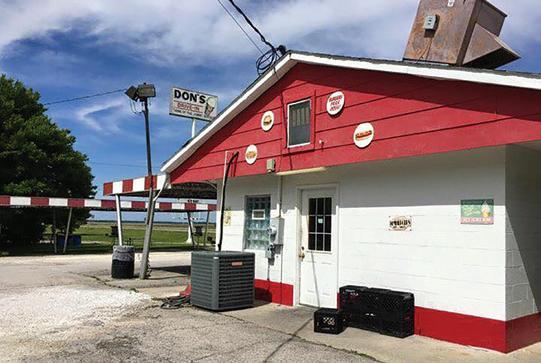
Triple XXX was Indiana’s first drive-in, and it opened in West Lafayette in 1929. The restaurant still serves its famous frosty root beer today — although the company no longer employs carhops. Pull in to Triple XXX (2 N. Salisbury St., West Lafayette), or one of these other local standouts, the next time you’d like to enjoy a tasty blast from the past.
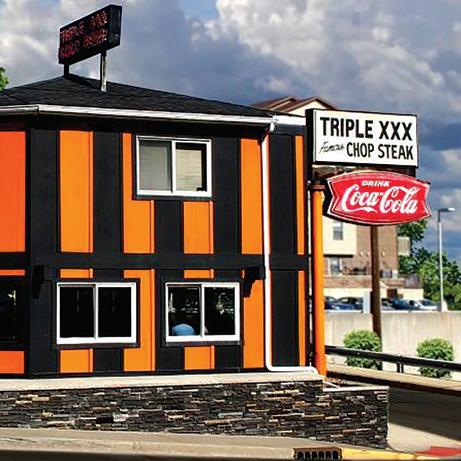
As the name suggests, hot dogs are the name of the game at this spot. You can wash down your dog with a milkshake or a flavored fountain drink and pick up a branded T-shirt while you’re there. You’ll receive 10% off your order if you come to the restaurant wearing a Mr. Weenie shirt!


Featuring an authentic intercom system and food delivery by carhops, Don’s Drive In has been in business for 45 years. It’s the place to order one of their ice cream “flurries” swirled with your favorite candy, as well as root beer floats, juicy burgers and fries. The restaurant is cash only, so come prepared.
Opened in 2014, The MUG is owned by Chris Baggot, who also heads up Tyner Pond Farm, a regenerative farm with grass-fed beef and pastureraised chicken and pork. The quality of meat shines through in their offerings, making their hamburger and pork tenderloin two must-try options.

Strawberry Fields may be forever — at least in some of our Beatle-inspired minds — but the juicy red morsels of late spring and early summer are fleeting. Be certain not to miss out on these first fruits of the season by visiting a strawberry festival near you.


All around Indiana, festivals featuring strawberries kick off summer by bringing communities together for good times, good treats and often, good causes. Here are some festivities to check out around the

May 26 | 11 a.m. until sold out, EDT
Johnson County Courthouse lawn, Franklin
Strawberries, shortcakes, ice cream and whipped topping are the main attraction, but the festival offers much more. Food vendors will be open around the courthouse square, and there will be a car cruise-in and bluegrass music from 7-9 p.m.

Discoverdowntownfranklin.com/strawberries-on-the-square
Friday, June 9 | 11 a.m.-10 p.m.
Saturday, June 10 | 10 a.m.-10 p.m.
Sunday, June 11 | 10 a.m.-4 p.m.
Historic Lane Place, Crawfordsville
Each June, Crawfordsville and Montgomery County residents come together to create the largest local event of the year, the Crawfordsville Strawberry Festival. The strawberry-themed festival features food, fun, arts & crafts and topnotch entertainment for all ages.
Crawfordsvillestrawberryfestival.com
June 4 | Noon-4 p.m., EDT
St Joseph Catholic Church, 410 S. Race St., Princeton
Join in this fellowship and community event featuring all things strawberry. Includes outdoor food, kid’s games, a dunking booth, basket raffle, games of chance and a barbecue meal (11 a.m.-2 p.m.).

Facebook.com/ events/5979258855515484
June 10-11, 17-18, 24-25 Saturdays 8 a.m.-7 p.m., Sundays 8 a.m.-6 p.m.
Johnson’s Farm Produce, 8960 E. Ridge Road, Hobart
Fun Farm Weekends include a variety of delicious strawberry treats and activities for kids. In addition, the $12 admission fee includes access to the “UPICK” fields and wagon rides. Johnsonsfarmproduce.com/strawberry-festival
Please check each event’s website or Facebook page before attending, as dates/information may change.
District 1: Up for election

• Gary Shough, incumbent
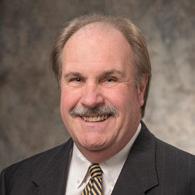
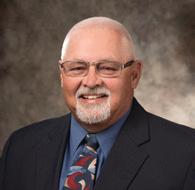
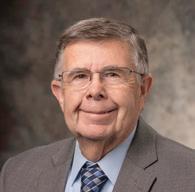
District 2: Up for election
• Ryan Welch
• Samuel “Gus” Reed
• Randy Tilbury
District 3: Bill Snyder
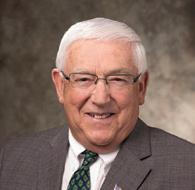
District 4: Mike Kurtz
District 5: Carter Snider
District 6: Neasa Kalme
District 7: Wayne Gingerich
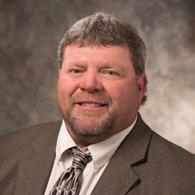
District 8: Larry Jack
District 9: Up for election
• Marc Nelson, incumbent
Learn about your director candidates on pages 29-30.

SILVER 100MBS — $64.95/MO
GREAT FOR COMPLETING HOMEWORK AND E-LEARNING
SECURITY MONITORING/ CAMERAS
GOLD 500MBS — $79.95/MO

IDEAL FOR STREAMING MULTIPLE MOVIES
PERFECT FOR WORKING FROM HOME AND GAMING
PLATINUM 1000MBS — $99.95/MO
OPTIMUM SPEED
MAXIMUM BANDWIDTH FOR CONNECTED HOMES
FREE INSTALLATION (DURING INITIAL CONSTRUCTION PERIOD)
NO CONTRACT
REAL HIGH SPEED
NO DATA CAPS/THROTTLING
RELIABLE CONNECTION
SYMMETRICAL UPLOAD & DOWNLOAD SPEEDS
WIFI-6 ROUTER INCLUDED WITH MANAGED WI-FI SUPPORT.
NO ADDITIONAL FEES OR EQUIPMENT LEASES.
PHASE I
BROADBAND IS NOW OPEN
STEUBEN COUNTY REMC’S BROADBAND PROJECT HAS OPENED ALL OF PHASE I.

ZONE 5 IS NOW OPEN!
WE ENCOURAGE HOUSEHOLDS IN PHASE II AND PHASE III TO PRE-REGISTER NOW AT REMCSTEUBEN.COM TO GET FIRST NOTICE OF OPEN DATES.

Operation Round Up is a program that allows Steuben County REMC members to automatically round up their monthly bill to the next dollar. The maximum a member would donate is $11.88/year, but an average donation is $6. The change is pooled together into a fund that is overseen by a group of members and two Steuben County REMC employees with a passion for our local community.
The Operation Round Up program has donated over $700,000 to
more than 540 projects in our local community since this program was started in 2004. The organizations that have been granted funds are non-for-profit that help with economic development or improve the quality of life of our membership. Local non-for-profit organizations can apply for funds. Application deadlines are the last Friday of March, June, September and December. To see more information go to remcsteuben.com/operationround-up.
If you would like to opt-in to the program, call our office at 260-665-3563.
We would like to thank the 2022 Operation Round Up volunteer board — Gus Reed (President), Deb Delancey (Vice President), Dale Chard and Craig Ralston — for their time and commitment to bettering our community.
The 2023 application deadlines are June 30, Sept. 29 and Dec. 29.
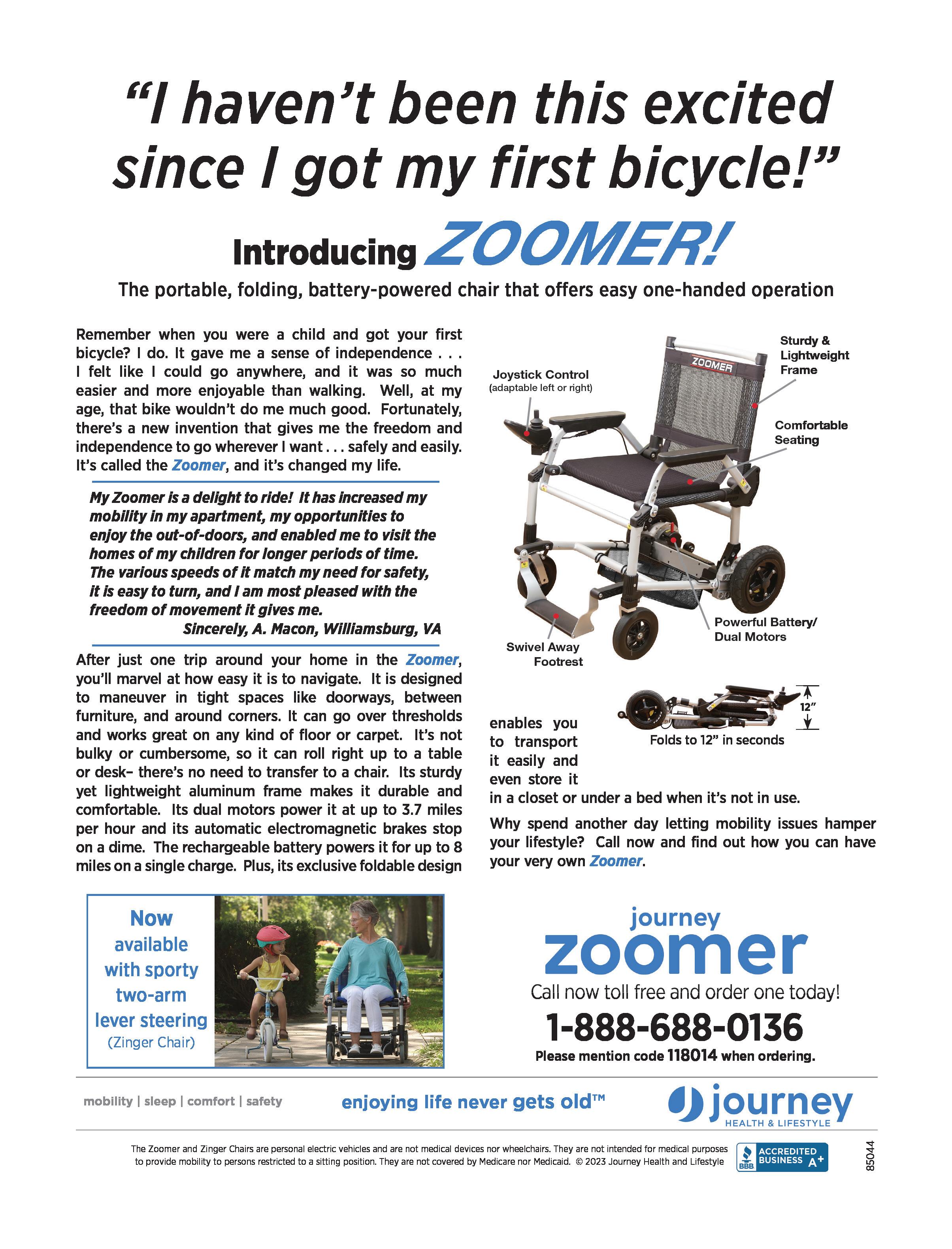

Veronica Sellers, Charlestown, Indiana
1 box yellow cake mix
1⅓ cups orange juice
4 eggs, separated
1½ teaspoons grated orange peel
¼ teaspoon cream of tartar
1 cup plus ¼ cup sugar, divided
2 cups whipping cream
2 pints fresh strawberries, washed and tops removed
In a mixing bowl, combine dry cake mix, orange juice, egg yolks and orange peel. Beat on medium speed for 4 minutes. Pour into two greased and floured 9-inch round baking pans; set aside. In a mixing bowl, beat egg whites and cream of tartar on medium speed until foamy. Gradually beat in 1 cup sugar, a tablespoon at a time, on high until stiff glossy peaks form and sugar is dissolved. Spread the meringue evenly over the cake batter. Bake at 350° F for 35 minutes or until meringue is lightly browned. Cool in pans on wire racks (meringue will crack). Beat whipping cream until stiff peaks form. Mash ½ cup of strawberries with remaining sugar; fold into whipped cream, adding powdered sugar to taste. Loosen edges of cakes from pans with a knife. Using two large spatulas, carefully remove one cake to a serving platter, meringue side up. Gently spread the top of the cake with about half of the cream mixture. Slice the remaining berries; arrange half the berries on top of cream mixture. Repeat layers.

Marilles Mauer, Greensburg, Indiana
3 cups flour
1 teaspoon baking powder
1 teaspoon salt
1 cup butter
1¼ cups sugar
3 eggs
3 tablespoons strawberry
preserves
Juice and zest of 1 lemon
1 teaspoon vanilla extract
8 drops red food coloring
⅔ cup finely chopped strawberries
Preheat oven to 375° F. Line baking sheet with parchment paper. In a medium bowl, whisk together flour, baking powder and salt and set aside. In a large bowl, mix butter and
sugar on medium-high speed until lightened in color, about 3 minutes. Add eggs one at a time, mixing well after each one. Add the strawberry preserves, lemon juice and zest, vanilla extract and red food coloring and mix until incorporated. Scrape down the sides of the bowl and mix once more. With the mixer on low, begin adding the dry ingredients a little at a time until everything is added and blended. Add the strawberries and mix on low until incorporated. Scoop out dough by generous tablespoons and put on prepared baking sheet, spacing about an inch apart. Bake for 10-12 minutes, then cool on a wire rack before serving.

Patricia Zobrist, Knox, Indiana
2 (10-ounce) bags of frozen strawberries, thawed
2 (6-ounce) cans frozen pink lemonade concentrate, thawed
2 (2-liter) bottles of ginger ale, chilled
1 pint fresh strawberries, washed, stems and leaves removed, and sliced
Add frozen strawberries to a blender and blend until pureed. Pour lemonade into a punch bowl and stir in processed berries. Add ginger ale and stir, then sprinkle in the fresh strawberries. Serve immediately.

Do you recall all the safety rules you were taught about refueling when you first learned to drive? Things like: shut off the engine; don’t smoke; don’t leave the pump unattended; and don’t overfill.
If you are among the growing number of drivers sliding in behind the wheel of an electric vehicle, different “refueling” considerations apply.

The most basic electrical safety lesson is that electricity and water don’t mix. However, EVs and their charging stations are designed to handle whatever Mother Nature throws your way, be it dust or rain. That being said, there are precautions to think about when charging an EV, whether you are in your garage or at a public charging station.
“You might not have to worry about spilling gasoline or setting off an explosion at the pump,” said Jon Elkins, vice president of safety, training and compliance at Indiana Electric Cooperatives. “But, just as when you use anything electric, there are a few things to keep in mind.”
Using a Level 1 charger plugged into your garage’s 120-volt/15-amp outlet is the easiest way to charge your vehicle, though it is the slowest. Always use the charger provided by the vehicle’s manufacturer. Before you plug into any electrical outlet, have a qualified electrician inspect and verify the electrical system (outlet, wiring, junctions and protection devices) for heavy-duty service according to your vehicle’s owner’s manual.
Check the electrical outlet and plug while charging and discontinue use if
the electrical outlet or plug is hot, then have the electrical outlet serviced by a qualified electrician.
In addition, always follow the manufacturer’s guidelines when charging. Some of the most common guidelines are:
• Do not use extension cords, multioutlet power strips, surge protection strips or similar devices.
• Do not use an electrical outlet that is worn or damaged, or one that will not hold the plug firmly in place.
• Do not use an electrical outlet that is on a circuit with other electrical loads.
The Level 2 electric vehicle charger uses 240 volts and 20 to 40 amps. This will recharge the car more quickly. You will probably need to have a qualified electrician install the charger and a separate service and plug at your home, similar to the 240 service for an electric range, water heater or clothes dryer.
Before using a public charger, always inspect it first to make sure it doesn’t appear damaged. EV charging stations are designed so the cable remains de-energized until it’s connected to the port on the vehicle. Once connected, the vehicle starts communication with the device, conducting measurements to determine everything is safe and working properly, and only then will it begin the flow of energy.
Switching over to an electric vehicle allows you to “fill ’er up” with kilowatts at a fraction of the cost of gasoline. But just as fuels come as gas, diesel, or E85, or in different octanes, electric vehicles have three general types of chargers. GoElectricDrive.com, which promotes EV awareness, has outlined the three currently commonly used.
Level 1:
Charger uses a standard 120-volt outlet. All drivers can charge their EV at Level 1 at home, which requires no extra equipment or installation. On average, a full charging time is about 8 hours — but varies by model. Consult the automaker’s website for more information.
Level 2:
Charger uses a 240-volt outlet. Homeowners may decide to install a charging station — also known as Electric Vehicle Supply Equipment (EVSE) — in their home. This requires professional installation of an outlet type commonly used by large appliances like electric ranges and dryers. There are also many Level 2 chargers across the United States in public areas. On average, full charging time varies from 2 to 6 hours.
Level 3:
These “DC Fast Charge” networks provide about 80 percent of a vehicle’s potential battery power in about 15 minutes. Though historically reserved for commercial and industrial settings, they are becoming increasingly accessible for use in charging passenger vehicles.
Motorists have long been told we were on a journey to a greener place. Just around the bend was a new world where electric vehicles would easily merge alongside gas-powered vehicles. But for decades, as we rounded the curves, topped hills and traveled long stretches, we passed untapped power lines. And from the back seat of America came the dispirited plea, “Are we there yet?”
At last, after false starts, dead ends and detours, the electrification of transportation is becoming reality.
To that point, TJ Garner, chief operating officer at Fulton County REMC in Rochester, accepted a challenge from Indiana Connection and his employer to take his family on spring break in the co-op’s electric car. This was more than just a short jaunt in the 2022 Ford Mustang Mach-E AWD.
Garner, wife Ashley, and their two daughters were heading to Rodanthe on North Carolina’s Outer Banks. That’s a two-day drive of just over 1,000 miles. Before leaving, Garner carefully charted the trip to locate public charging stations all along the way.

EVs are expected to fully merge into the mainstream by the early 2030s. And, some orange-coned construction zones for electrical infrastructure will need to pop up. But when kids in the backseat of an EV on a long trip start asking, “Are we there yet?,” as kids have asked probably since the days of the Conestoga wagons crossing the dusty plains, that’ll be the sign that EVs as mainstream transportation have arrived.
On the next four pages, follow the Garner family’s “EV travelog” and “TJ’s takeaways” for anyone considering a similar journey.
The car is packed with four suitcases in the back hatch; what was left for a week on the Outer Banks is shoved in the “frunk” (the front trunk of an electric vehicle where the engine is normally located for gas-powered cars). The battery is charged to 100% — for now.
This trip is going to take me out of my “if it isn’t half full, it’s empty” mentality. At a couple of points, we’ll be putting the estimated 312-mile battery range of the REMC’s Ford Mustang Mach-E to the test more than my comfort range normally likes, especially as we get into the mountains of eastern Tennessee and western North Carolina.
After a short first leg down U.S. 31, we arrived at the charger at 67% of charge. Adding only 13% to the battery did not take long. Since it was cold and blustery outside, Ashley and the girls just stayed in the car. After the battery charges to 80%, the kW input really drops off, and it’s almost a waste of time to add more, as long as you have enough at 80% to get to your destination or the next charger.
Out of Indiana and into Ohio: With the seat warmers on and the girls snuggled up in blankets, we arrived at the EVgo station where there were three chargers. Two were 50 kWs, the other was a 150 kW. The faster one was being used when we arrived, so I pulled up to one of the slower ones and plugged in. After I was plugged in for all of three minutes, the car at the faster charger left, so I switched. This charge of about 30 minutes took the car’s battery from 29% to 80%. At the charger, the guy next to us was charging his Kia and admiring the Mustang. I told him about the 1,000-mile trip we were on. He said, “You must be braver than me.”
Into Kentucky: All those horse farms we passed along I-75 seemed fitting since I was driving a Ford Mustang EV. The weather changed, and the sun came out. The temperature jumped up about 20 degrees. The car’s built-in navigation system picked up on this change just north of Lexington. We arrived at the Electrify America charger with 51%. Plugging into the 150 kW charger got us back up to 80% in 20 minutes. At this station, we had the only car parked at any of the chargers.
The car needed one last charge to get us to our destination of the day — Asheville, North Carolina. We arrived at the Electrify America station this time with 38%. Three cars were charging at this stop. The car suggested we charge to 84%, but the charge slowed down so much after 80% that I couldn’t wait any longer. After 25 minutes, we were on the road again. Upon leaving, the navigation system said we should arrive at the hotel we were staying for the night with 25% battery remaining.
Day 2 of the trip started with me leaving the family at the hotel and heading to the Electrify America station next to the hotel. The charger area was busy for being a little before 8 a.m. I was able to get the last spot in the six-bay station. It took an hour to get me to 80%. Then, it was back to the hotel to get the girls and back out onto I-40 heading east.
The so-called “range anxiety” never affected me in the Mustang … until I missed my exit and had to drive all over the state of North Carolina to get back on the right path. As the battery’s percentage kept dropping, my anxiety kept increasing. We finally arrived at the hotel with 12% battery left. I’m sure this would not bother many people, but as a new EV driver, I was in panic mode. Luckily, the hotel was a block away from an Electrify America station. That was intentional, on my part, in planning the trip.
Jamestown was planned out perfectly from the car’s onboard navigation. It brought us to a charger that was a half mile off the path. That would have been perfect — if I could have gotten the charger to connect. The app needed for this charger at Shell Energy was one that I did not have in my rolodex of charging apps on my phone, and for some reason I could not download one. So, after messing with it for a few minutes, I looked for the closest one down the road. We had to go about 10 miles out of the way, but it was at a nice little grocery store. This was a 45-minute charge to 80%, and off we went.
The final stop before Rodanthe was at Edgecombe-Martin County Electric Membership Corporation in Tarboro. This charger was one of my favorite charger spots. The charger was in the parking lot of the cooperative. Though there was no bathroom (the cooperative office was closed on this Saturday afternoon) and no snacks, what I liked about this location was the empty parking lot. Every other charging station we used was in a busy parking lot. The girls got to get out and run off some energy without any worry of traffic. An hour on the dot, and 80% charged, we were ready for the beach.
We arrived at the beach in the late afternoon with about 80 miles left of range. I immediately plugged the car into a 120volt wall outlet at the vacation home we are renting with my parents, my two sisters and their families — 14 of us with ages ranging from 3 to 72. My Ford app said the Mustang would be fully charged in four days, Tuesday at 11 p.m. There is a public charger down the road that I hope works because it’s the only one faster than the wall outlet for 90 miles.

Day 3
For the journey home, the Mustang had charged to 98% on the car’s portable charger plugged into a 120-volt outlet at the beach home. Its range read 245 miles. We said goodbye to the rest of the family and headed out just before 8 a.m. We essentially retraced our route. We made two stops in North Carolina before reaching Asheville for the night. Nearing Asheville, we hit a headwind of 40 mph. That, with the mountains, made the range drop fast. I got a little nervous when the car’s “low battery” alarm dinged at 21%. It dinged again at 11%. But, we made it to the hotel, and I recharged at the same station I used on the way to Rodanthe.
We left the hotel at 7 a.m. with 80% charge. Stops included stations just east of Knoxville, Tennessee, and the two in Kentucky where we had stopped on the way down. The last gave us enough juice to skip the stop in Ohio.
Back home again in Indiana, the car’s navigation took us to an Electrify America station on Indy’s northeast side in Fishers. Mallorey was in charge of hooking up the charger at this stop. She did great!
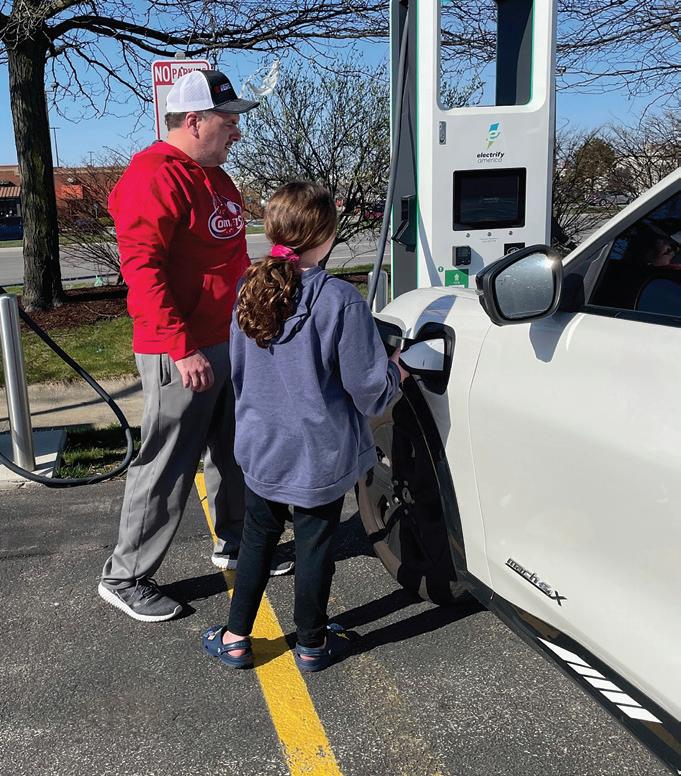
We arrived home in Rochester that evening with 33% battery left. We unpacked, and I dug out the portable charger to charge the car overnight so it was ready to go in the morning — when it was back to work for the Mustang and me.
I was skeptical about taking this trip in the Ford Mustang EV. The farthest I had driven it previously was 96 miles. Even then, I made sure I was fully charged before I left and plugged into the free charger while there. Range anxiety was a big deal to me. After 2,100 miles, here are some things I learned:
• Room for four: I was surprised how much we were able to fit into the Mach-E. No issue with not having enough room for a family of four and all the things needed for a week at the beach.
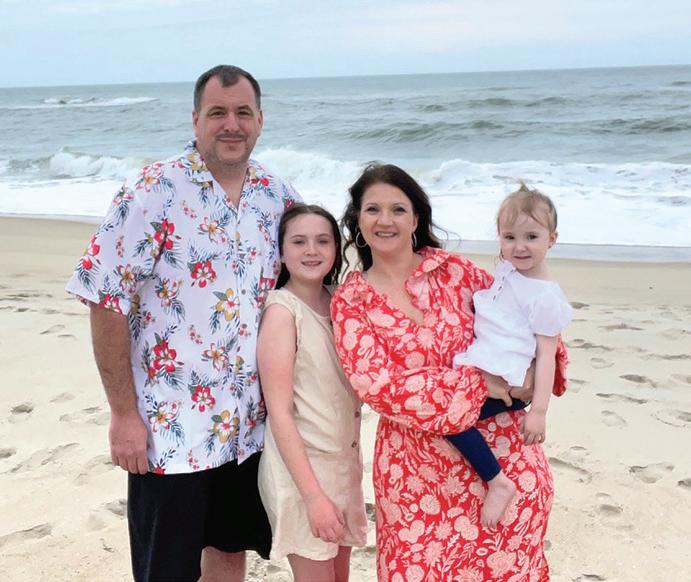
• Use the Ford: Before the trip, I plotted the route that would give me the most access to chargers along the way. This helped me with my range anxiety. After driving a few hundred miles, I decided to trust the car’s built-in navigation system. It gave me an exact mile range to my next charger. Seeing that the mileage was always less than total miles left on the battery really did keep me from worrying about not making it to the next charging destination.
• Charge time: The time needed to recharge added about 3.5 hours each way. On the way down, it actually was nice having those extra stops to break it up. On the way back, it seemed longer. But by then, no matter if you’re stopping at gas stations or charging stations, you just want to get home.
• The cost: The big question most folks probably have is “What was the difference in the wallet?” I knew the price of charging along the road had gone up, but I had no idea it was now an average of 45 cents per kWh (the average kWh costs Indiana residential electric consumers about 17 cents). If I drove those same miles and was able to charge at my home rate, I would have spent only $75. As it was, we spent $268 for 596 kWhs I had to buy along the way. If we would have taken our Ford Explorer that gets 25 mpg, we would have spent around $294 for the 2,100 total trip (using an average of $3.50 for a gallon of gas). So, there was some savings on fuel cost, but not a lot. This trip was never about saving time or money. Like any family trip, it was about making memories. Our girls will have many from our EV journey.
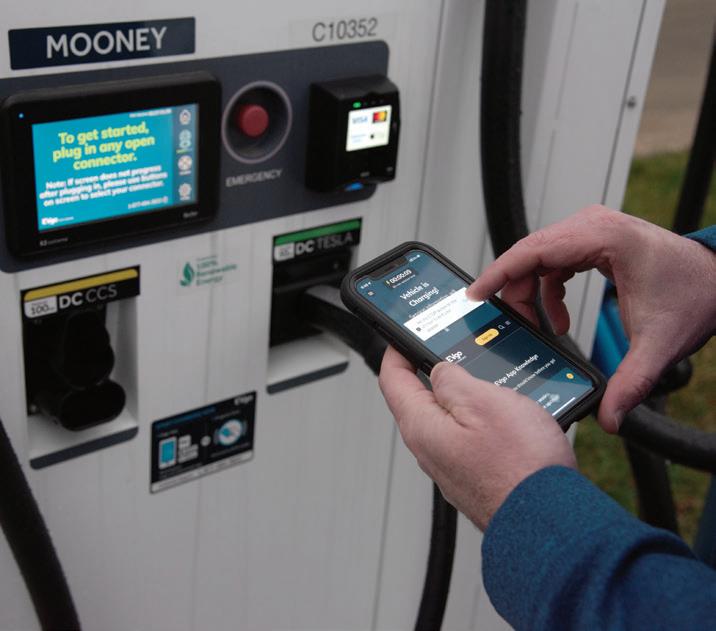
EVs have evolved since first arriving in car showrooms over a decade ago. Yet, as with any new technology, myths based on earlier perceptions persist. Here are three common ones.
Source: EPA.com

MYTH: Electric vehicles don’t have enough range to handle daily travel demands.
FACT: EV range is more than enough for typical daily use.
A typical U.S. household’s daily travel is about 50 miles; only 15% of households travel over 100 miles on a typical day. Most EV models go above 200 miles on a fully-charged battery, with nearly all new models traveling more than 100 miles on a single charge.
Range estimates for specific EVs are available from the “Find a Car” tool on www.fueleconomy.gov — click on the car you are interested in and check out the “EPA Fuel Economy” information in the table.
MYTH: There’s nowhere to charge.
FACT: Most EVs can be plugged into the same outlet as a toaster! When you need to charge fast on the road, you’ll find over 51,000 stations in the U.S. available to the public. Many people can meet their driving needs by plugging in only at home with a standard 120-volt outlet or a dedicated 240-volt system. For those who live in apartments or condominiums, EV charging stations are becoming a common amenity.
Access to EV charging will increase significantly in the coming years as charging infrastructure is built out along highways and in communities.
MYTH: EVs are not as safe as comparable gasoline vehicles.
FACT: EVs must meet the same safety standards as conventional vehicles.
All light-duty cars and trucks sold in the United States must meet the Federal Motor Vehicle Safety Standards. To meet these standards, vehicles must undergo an extensive, long-established testing process, regardless of whether the vehicle operates on gasoline or electricity. EV battery packs must also meet their own testing standards. Moreover, EVs are designed with additional safety features that shut down the electrical system when they detect a collision or short circuit.
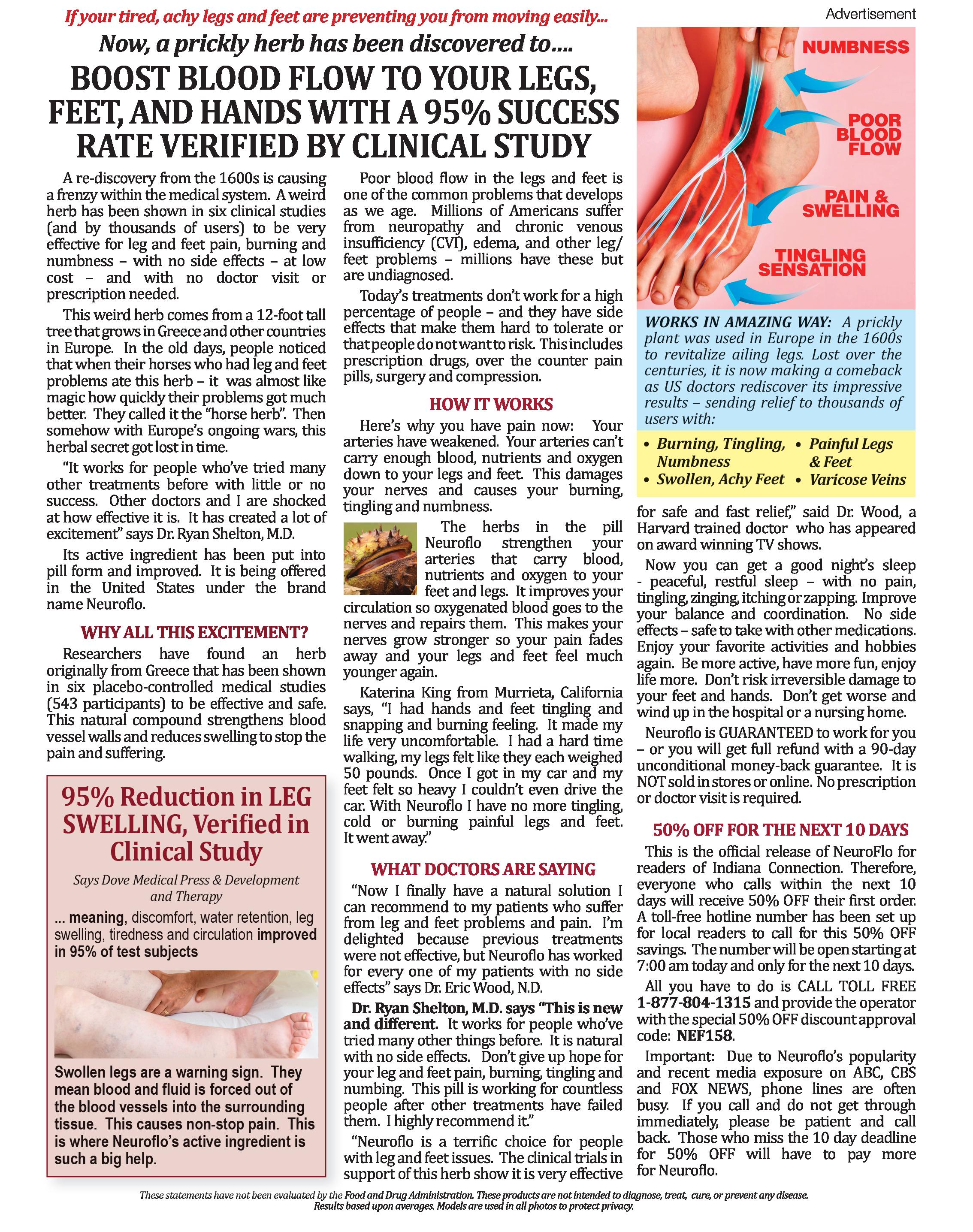

Your high-speed internet connection can hook you up with savings — on your heating and cooling costs.
As more people gain access to broadband internet connections, they may consider upgrading to a Wi-Fi thermostat. Fortunately, your local electric cooperative offers a $45 rebate for qualifying Wi-Fi thermostat upgrades. And beyond the rebate, a Wi-Fi thermostat can help you save money over time. Your home’s heating and cooling are often its largest use of energy. Some Wi-Fi thermostats can sense when you’re not home and can be programmed to reduce energy use at specific times of the day. This helps your HVAC system avoid working overtime.
Here are a few additional reasons to consider upgrading to a Wi-Fi thermostat:
If you’ve pulled into your work parking lot only to realize you forgot to change your thermostat
to a more energy-efficient setting, you’re not alone. Sure, it’s nice to come home from work to a comfortable temperature, but it’s a waste of energy to run your heating or air conditioning unit at an optimal temperature for humans all day — especially if you’re not there for eight hours or more. With your Wi-Fi thermostat’s app on your smartphone, controlling the temperature is a few swipes away.
A Wi-Fi thermostat can provide more flexibility. For example, many Wi-Fi thermostats allow you to set specific temperatures for certain parts of your home. If your family is all hanging out in the family room, you probably don’t need to be heating or cooling your upstairs bedrooms. Some thermostats may even let you program a different setting for each room, optimizing your energy use and saving you money on your energy bill.

A Wi-Fi thermostat can improve your home’s air quality by letting you know when your filters need to be changed or alerting you when you need to schedule regular HVAC maintenance. Some Wi-Fi thermostats even include a humidity sensor, helping you keep your home at a comfortable level.
These are just a few reasons why you might benefit from upgrading to a Wi-Fi thermostat. To learn more about these energy-efficient appliances and how they work with your specific HVAC system, visit our Wi-Fi thermostat page at PowerMoves.com, or contact your local electric co-op’s home energy advisor today.
Exercise one of the greatest benefits of being a member of an electric co-op by voting for the upcoming year’s board of directors. Districts 1, 2 and 9 are up for election.


Why are you running for office?
“I enjoy the challenges and opportunities being a director offers to me. It’s rewarding to see our community grow through decisions that are made in the boardroom including Operation Round Up and the broadband project.”
Occupation: Equipment Operator, Steuben County Highway (25 years)
Community Involvement: 4-H Fair Board (President), Boy Scout Troop 423 (Assistant Scoutmaster), Orland Community Volunteer Fire
Department (Assistant Fire Chief)
Special Recognitions: Credentialed Cooperative Director Certificate, Board Leadership Certificate and the Director Gold Certificate
Why are you running for office?
Family: Married to wife, Kelly, two children and six grandchildren
Interests: Working my small farm in the northwest corner of Steuben County, where I feed out a few steers. I enjoy hunting and fishing.
“I feel I’m giving back to our members for what our co-op has d one since being founded in 1937. I have enjoyed watching the progress of the fiber coming to our me mbers and other benefits.”
Occupation: Owner of Nelson’s Carpet Service (30+ years)
Community Involvement: Indiana Electric Cooperative (IEC) Board
Special Recognitions: Credentialed Cooperative Director Certificate, Board Leadership Certificate and the Director Gold Certificate
Family: Married to wife, Robbie,
for 45 years, four children and 13 grandchildren
Interests: Enjoys riding motorcycles, fishing, camping and spending time with family.
District 2 candidates on next page
Why are you running for office?
“I have always been impressed by the way our REMC has taken care of the community, its members and employees. The service and professionalism is second to none. I would like the opportunity to contribute my sales and business experience to remain competitive in the market and support the ongoing success of this wonderful organization. ”
Occupation: Outside Sales Territory Manager, Dunham Rubber and Belting Corporation (23 years)
Degree/Certification: Bachelor of Science in Industrial Technology Education
Community Involvement: Sons of the American Legion Post 423 Orland, Indiana (past Chaplin), American Legion Riders Post 423 (current Director, previous: Treasurer, Chaplin), Honor Guard Commander Post 423,
Why are you running for office?
Jimmerson Lake Association
Family: Two children
Interests: Enjoys riding motorcycles, boating, fishing, hunting and shooting sports.
“Now that I am retired, I’d like to dedicate a significant part of my time serving the community.”
Military Service: U.S. Air Force
Occupation: Engineer, Department of Defense Air Force Research Lab (retired after 40 years)
Degree/Certification: Bachelor of Science in Aerospace Engineering; Master’s in Business Administration; graduate Air War College
Community Involvement: Snow Lake Cottagers Association (President), Steuben County REMC Operation Round Up (President), Trine University Mechanical Engineering and Cast Metals Professional Advisory Board, Steuben County Lake Council (Lake Representative), American
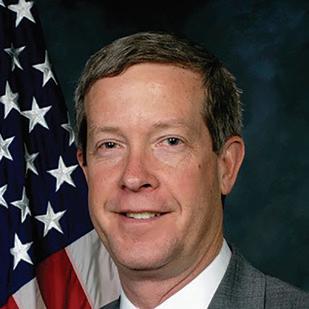
Why are you running for office?
Legion Post 423 Orland, Indiana
Special Recognitions: Outstanding Civilian Career Service Award
Family: Married to wife, Cheryl, six children and three grandchildren
Interests: Enjoys hunting, fishing and all things outdoors.
“Since I retired in April 2022, I feel that I now have the time to devote to this board. I have been interested in the REMC for years and I feel that my financial background could contribute to the organization as it expands its services.”
Occupation: Certified Public Accountant, Randy Tilbury CPA (retired after 47 years)

Degree/Certification: Bachelor of Arts in Business Administration, Certified Public Accountant
Community Involvement: Past member of Kiwanis and Rotary.; Fremont United Methodist Church (past Treasurer); Little League
Baseball (past coach); Fremont Junior High and High School Golf (past coach); volunteered with many Steuben County exempt organizations. Involved with Steuben County Community Foundation since 1992
Special Recognitions: As a senior at Angola High School in 1976, finished first in National Co-op Education accounting test, graduated Tri-State

University School of Business with highest GPA.
Family: Married 40 years to wife, Phyllis, two children and four grandchildren
Interests: Enjoys golfing, woodworking, helping people and family with building improvement projects. Lifelong resident of Steuben County.
